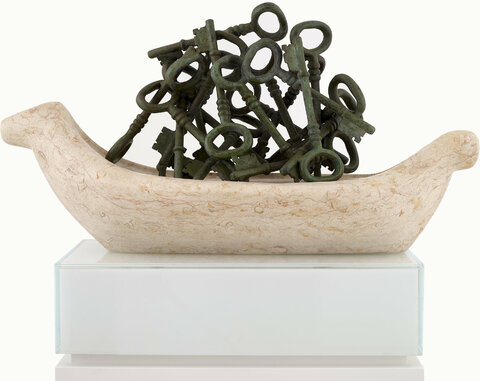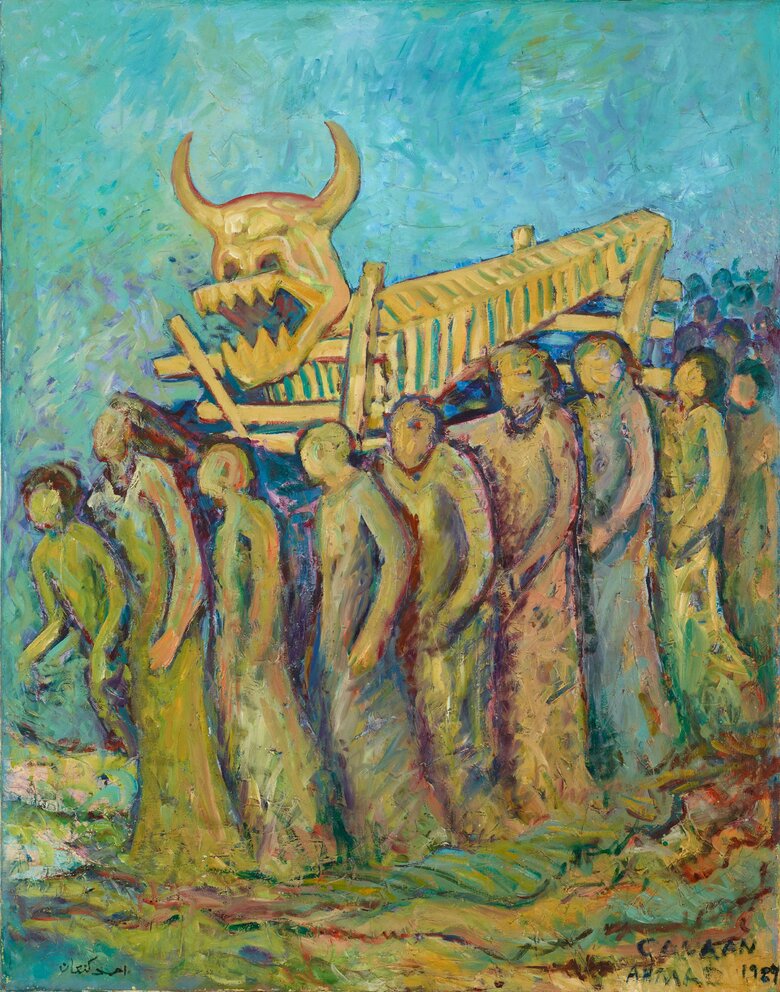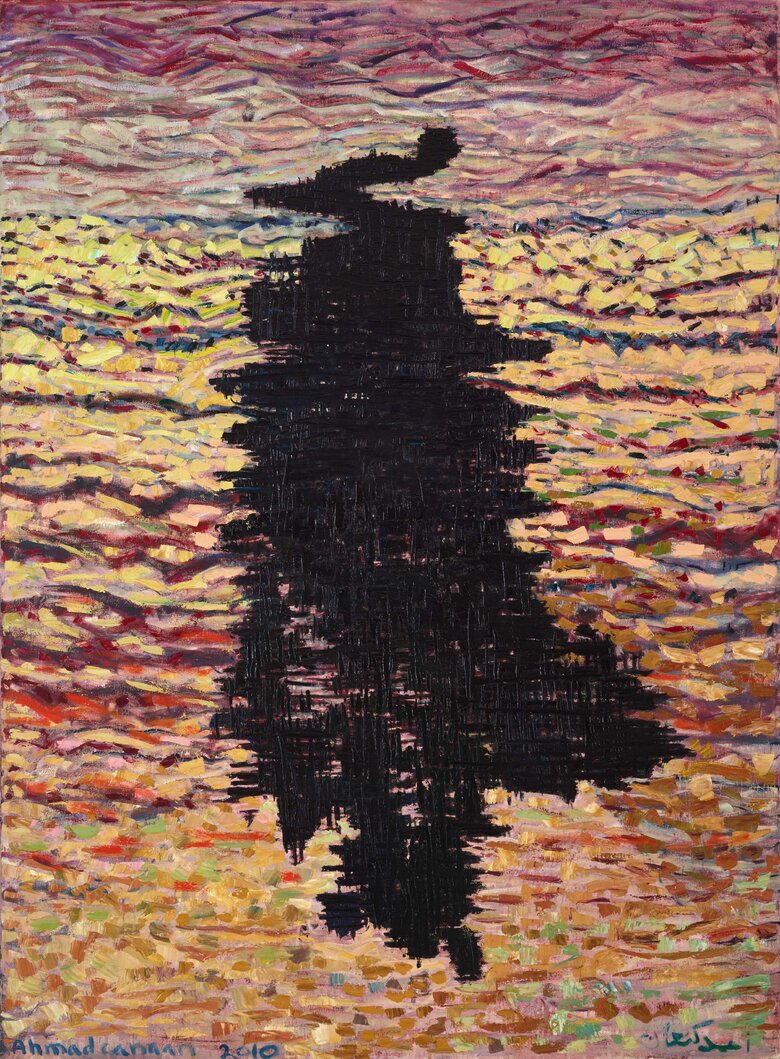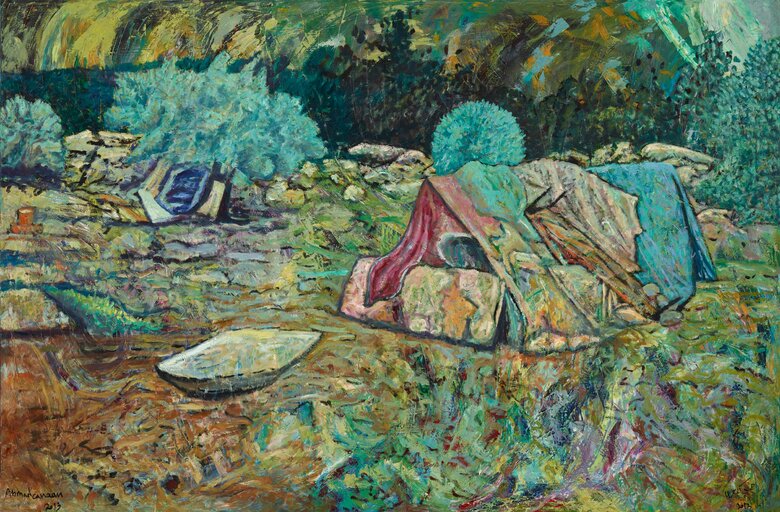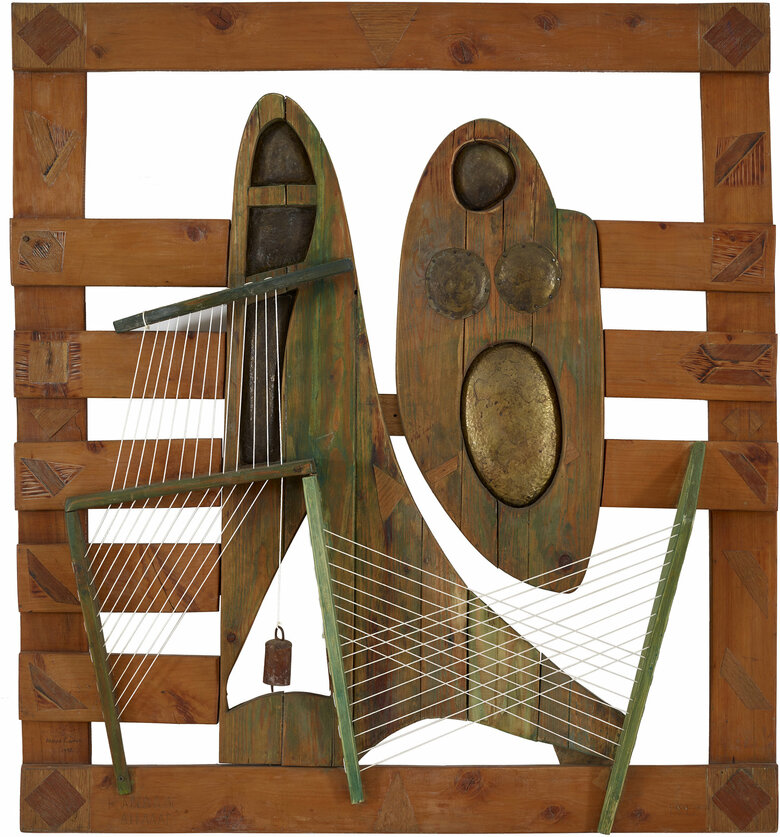‘Beit’, meaning home, also doubles as a term for ‘family name’ in colloquial
Arabic. This dual meaning refers to when extended families resided together,
encompassing children, married sons, and grandchildren under one roof. In a
tradition, reflective of this arrangement, when a family reached the end of its
bloodline, the door was ceremoniously locked, and the key was tossed onto the
roof.
The sculpture Refugee Ship, crafted by Ahmad Canaan, features a ship-like stone base carrying twenty bronze keys. The key is a direct symbol of the Palestinian’s home ownership. As implied by its title (The Refugee Ship), the sculpture addresses the forced displacement of Palestinians from their homeland. Even in seeking refuge elsewhere, they still hold onto their house keys.
With its elevated stern and low bow, the stone ship, mimicking a Phoenician ship, alludes to a journey into the sea. It carries oversized keys strategically scattered in an artful random arrangement. The keys represent the deserted homes and their unjustly exiled owners. They stand as a testament to the internationally recognized right of return guaranteed during al-Nakba, a request that tragically remains unfulfilled.
Al-Nakba, in Arabic, meaning the catastrophe, refers to the 1948 Arab-Israeli
war that led to the occupation of Palestine and the creation of the Israeli state
on May 15 of that year. More than 750,000 Palestinians were dispossessed of
their homes and properties, and 500 villages were destroyed. Al-Nakba’s
devastating incident is commemorated annually on May 15. This even
symbolizes the ongoing struggle against oppression rooted in the emergence
of Zionism in the late 19th century. Central to the Palestinian identity, al-Nakba
has fueled their pursuit of justice and the right to return home since May 15,
1948.
Signed in Arabic on the side of the sculpture


